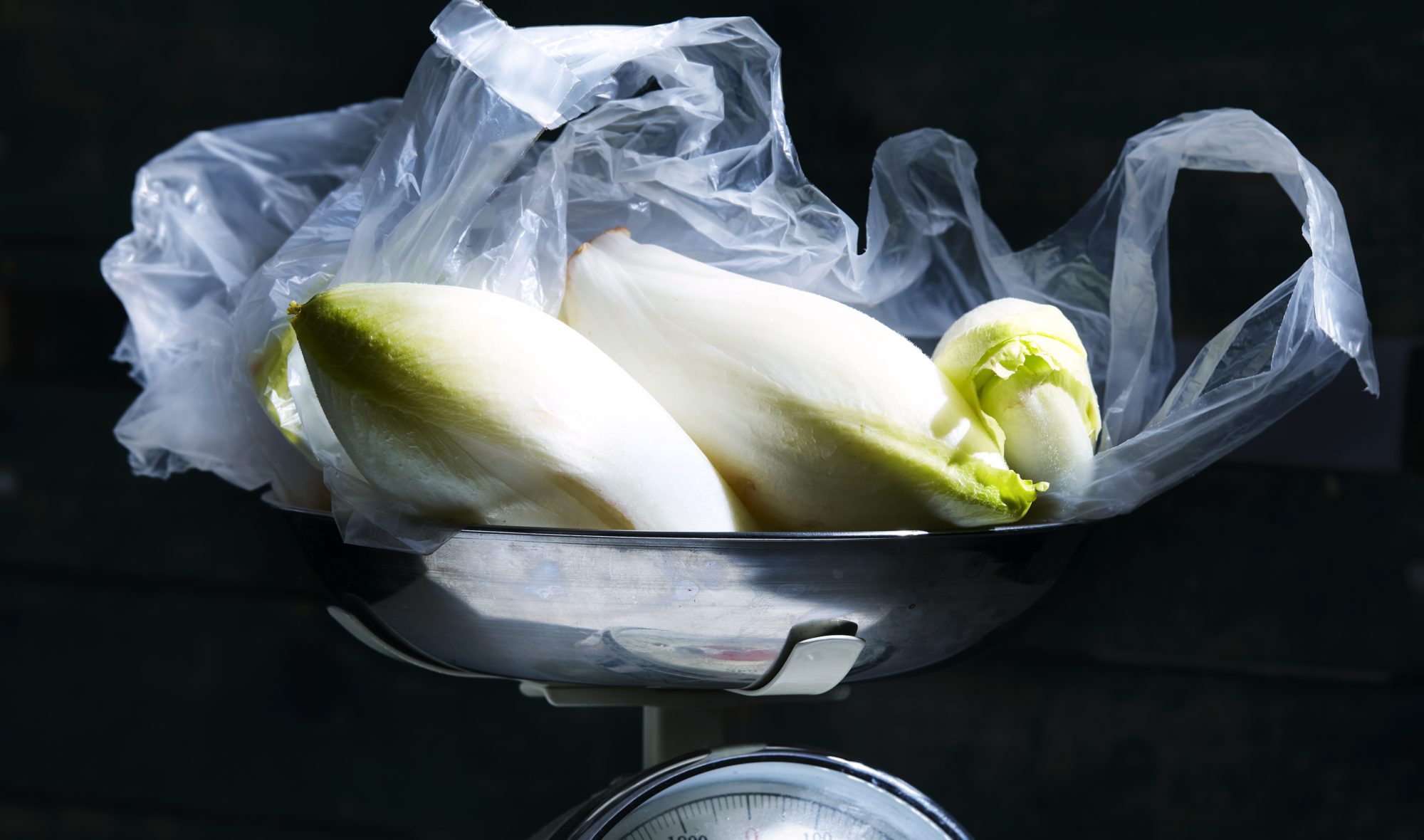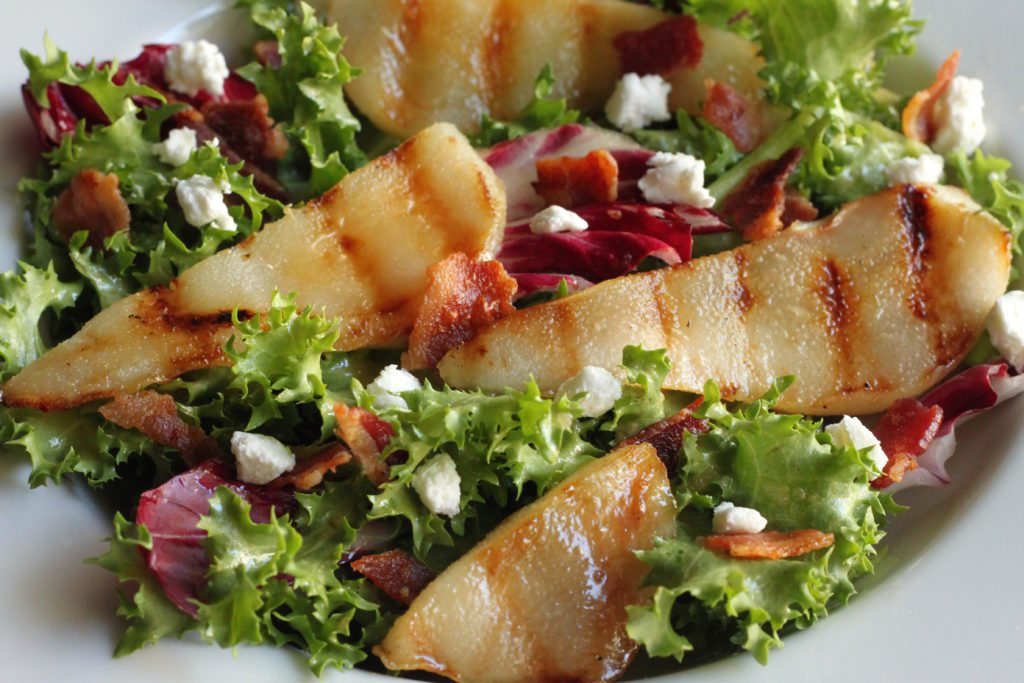Endive


There are two species that bear the name “endive”: Belgian endives and curly endives (also known as frisée). Belgian endives are the sprouted tops of the chicory root, forming pale heads composed of tightly-packed oblong leaves. Curly endives are tousled, green heads of spindly leaves. Both varieties are delicately bitter and slightly sweet. Like many water-rich vegetables, endives are low in calories and high in nutrients – particularly vitamin K, vitamin A, folate, and vitamin C. Belgian endives are delicious sautéed, braised, or even grilled, but they are especially fun raw; their sturdy, boat-shaped leaves make perfect vehicles to transport a variety of toppings and dips into your mouth, much like an edible utensil. Curly endives are fun primarily due to how they look: like an untamed curly plant afro.
Endives are a species of chicory, with two varieties bearing the name “endive”: Belgian endives and curly endives (also known as frisée). Closely related and also part of the chicory family are escarole and radicchio.
While Belgian endives and curly endives overlap in flavor, they are quite different in appearance. This is largely due to how they are grown.
Like many pale-colored vegetables, Belgian endives owe their blanched appearance to a lack of sunlight. The growing process of Belgian endives has two parts: First, the plant is grown outdoors, and upon maturity, the roots are harvested, and then packed tightly in trays which are then stored in temperature- and humidity-controlled rooms, where they are left to sprout in complete darkness. The sprout tops, which grow over a period of about a month, form the pale, crunchy heads known as Belgian endives.
The growing process of curly endive resembles more closely the growing processes of typical lettuces: Their seeds are planted in the soil, where they germinate, then sprout up and mature, greenly, under full sun.
Belgian endives form oblong, tightly packed heads of nearly white leaves with pale yellow or purple tips. (The purple-tipped variety is known as red Belgian endives.) Their leaves are sturdy, smooth, and boat-shaped, making them perfect vehicles for fillings or dips.
Curly endives have tousled heads made up of curly, narrow, mid-green leaves. These leaves have pale, sometimes slightly prickly stalks that extend into erratically-shaped leafy projections.
Both types of endive are delicately bitter and slightly sweet, with a satisfying watery crunch.
One cup of chopped, raw endive (about 50g) has 8 calories, 0.6g of protein, 0.1g of fat, 1.7g of carbohydrates, 1.6g fiber, and 1.1g sugar. Endives are an excellent source of vitamin K, and a good source of vitamin A, folate, and in its raw form, vitamin C.
Endives are available at most good grocery stores and fresh produce markets. Belgian endives are more likely to be available all year long due to their artificial growing conditions.
In the case of Belgian endives, choose heads that feel firm and have pale tightly-packed leaves. Darker leaves will be bitterer, while paler leaves will be sweeter. Pass over specimens that show signs of wilting, discoloration, or holes from nibbling insects.
In the case of curly endives, choose heads that have springy, bright green leaves that are free of excessive wilting or yellowing.
Endives are best preserved wrapped in plastic and stored in the fridge. They will stay fresh for up to a week.
If a little bit of wilting occurs, Belgian endives can be revived by chopping them up and immersing them in a bowl of cold water for about half an hour.
Curly endives can be revived by placing their base in a shallow bowl of water for a couple of hours. The leaves will “drink” the water, and turgidity will be restored.
Belgian endives are delicious sautéed, braised, or even grilled, but the simplest way to prepare them is to eat them raw. Due to their sturdy boat-shaped structure, they also make ideal vessels for dips and fillings.
In order to eat Belgian endives, prepare them by chopping off the tip of the coarse butt. At this point, some people will slice the endive in half, lengthwise, and cut out a wedge at the bottom, where the leaves have fused together. This part is quite bitter, although completely edible, so it is your choice whether you remove it or not. After that, the endive can be sliced into small rounds or whole leaves can be separated from the head. Place the endives in a strainer and rinse under cool water. Now they are ready to be topped with dressing, fillings, or eaten plain.
Curly endives, with their erratic, spindly leaves, are best suited to salads.
In order to eat curly endives, first cut out the core at the base of the head, and then separate the tangle of leaves. Place the leaves in a strainer and rinse under cool water, tousling them as you go to loosen any grit. Dry the leaves in a salad spinner, or let them drip dry. Now they are ready to eat.

When you combine pears brushed with butter and maple syrup drenched in a warm shallot vinaigrette you won’t even know that endive has a bitter taste to it!
Prep Time: 10 minutes Cook Time: 20 minutes Yield: 4 servings
Bring a small pot to a boil and heat a medium skillet over medium-low heat.
While waiting for the water to boil and skillet to heat up, prep the veggies: Chop the shallot into small pieces; peel the pears, slice them in half lengthwise, remove seeds, and set aside; wash the curly endive and remove the bottom white part of the stem; slice radicchio in half and then into smaller pieces; and add endive and radicchio to a large bowl or 4 separate bowls.
The water should now be boiling. Place the sliced pears into the boiling water and boil for 4 minutes until slightly soft.
While waiting for the pears to boil, cook bacon on the heated skillet until very crispy – approximately 6 minutes on each side. Once done, place on paper towel to absorb grease. Keep the skillet on the heat and add the chopped shallot – you can use the bacon drippings or wipe clean and add 1 tsp butter. Cook and stir shallot until translucent.
Heat a grill plate (or regular pan) on medium heat. Slice the boiled pears into thin slices. Melt 2 tsp butter and stir in 1 tsp maple syrup. Brush both sides of the pears and place on heated grill plate and grill lightly for 2 minutes each side until you can see grill marks.
Using a food processor or blender, mix the dressing ingredients with the shallot to try and combine all the ingredients. It may still be a bit lumpy – but combine as best you can. Dressing can be warm or cold but will be warm if you serve immediately.
Pour dressing over salad mixture and toss. Top with crumbled bacon, goats cheese, and grilled pear.
Enjoy!
Precision Nutrition’s Encyclopedia of Food expands every single month as we highlight new foods and showcase beautiful food photography. If you’d like to stay up to date, simply click this link. From there, we’ll send you a FREE copy of our recipe book. We’ll also let you know when new and delicious foods are added to the site.
There are two species that bear the name “endive”: Belgian endives and curly endives (also known as frisée). Belgian endives are the sprouted tops of the chicory root, forming pale heads composed of tightly-packed oblong leaves. Curly endives are tousled, green heads of spindly leaves. Both varieties are delicately bitter and slightly sweet. Like many water-rich vegetables, endives are low in calories and high in nutrients – particularly vitamin K, vitamin A, folate, and vitamin C. Belgian endives are delicious sautéed, braised, or even grilled, but they are especially fun raw; their sturdy, boat-shaped leaves make perfect vehicles to transport a variety of toppings and dips into your mouth, much like an edible utensil. Curly endives are fun primarily due to how they look: like an untamed curly plant afro.